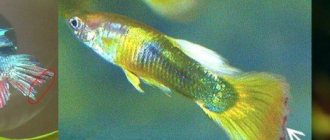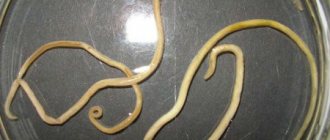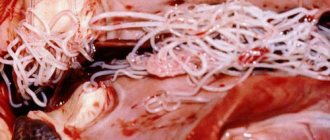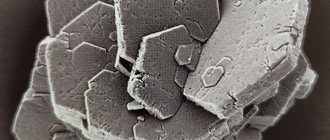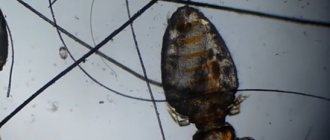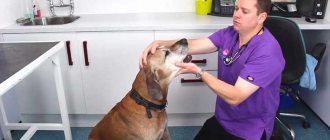Worms appear quite often in pets. Even if an animal never goes outside, this does not mean that it will never become infected. Treatment of helminthic infestation is simple, provided that it is started on time. However, advanced disease can lead to serious consequences. In addition to treatment methods, you should know where worms come from in your domestic cat.
Reasons why worms may appear in a domestic cat
There are a number of reasons explaining where worms come from in domestic cats. The prevalence of this disease is explained by the fact that the parasites are very tenacious and have many carriers. Therefore, the fact that a pet sits at home all the time does not guarantee that it will not develop helminths.
There are several known methods of infection:
- the cat is given raw meat or fish;
- worm eggs enter the body while walking outside, as well as if there is damage to the skin;
- parasite eggs were brought into the house on the shoes of the owners (passive invasion).
If severe symptoms appear, it is necessary to begin treatment as quickly as possible.
Parasites can even be found on animal fur
Is there a danger to humans? Probability of infection
About 32 varieties of worms can live in a cat’s body, which pose a danger to human health. The main cause of infection is non-compliance with hygiene rules. When feeding a cat by hand or playing with it, parasite eggs land on the skin of the hands and then penetrate into the oral cavity.
In addition, worms can enter the human body by touching surfaces on which eggs remain (for example, a tray).
The danger of infection with worms for humans (without proper treatment):
- enterobiasis,
- Iron-deficiency anemia,
- dyspeptic disorders (heartburn, diarrhea, etc.),
- damage to internal organs, etc.
To avoid dangerous consequences, it is necessary to regularly examine your pet, and if the first signs of helminthiasis occur, seek veterinary help. The specialist will conduct a thorough diagnosis of the cat’s condition and tell you whether they are dangerous to the human body.
Why are they dangerous?
A cat's health is at risk when a large number of parasites accumulate. The danger of this disease is that, due to its nonspecific symptoms, it can be confused with diseases of a bacterial, viral nature, as well as some non-contagious diseases.
With a large number of helminths, intoxication of the body can begin, which can lead to health problems and even death. However, such cases are rare, since cats can be saved from this scourge.
Types of worms
There are several types of parasites known to infect cats.
Roundworms (nematodes)
Cats can become infected:
- Toxocara, or roundworm. This species is more common than others. Size – 3-10 centimeters. Habitat: small intestine. Eggs are hatched in feces and can end up in soil, water, and even dust. They can also come with raw meat. From the intestines they enter the blood through the walls, then penetrate into the lungs, where they begin to develop, causing discomfort and coughing. Adults lay eggs there, which enter the stomach, and from there into the intestines, where the development cycle begins again.
- Hookworms are small parasites (up to 2 millimeters) that penetrate the skin and live in the intestines.
- Heartworms, or heartworms. Mosquitoes or fleas are considered carriers. They are carried by blood throughout the body, the main habitats being the heart, muscles, lungs or blood vessels.
Tapeworms (cestodes)
How does a cat become infected with tapeworms?
The habitat are in other organs . They have small hooks with which they are attached to the walls of the intestine. The source of infection is low-quality raw meat. That is why you need to monitor the animal’s diet.
The size of the cucumber tapeworm varies from 10 to 70 cm. An animal can become infected by eating a fly that carries eggs, or by picking up a flea with parasites.
In appearance, the wide tapeworm is similar to the cucumber tapeworm, but you can only become infected with it by eating raw river fish or swimming in an open body of water.
Echinococci and alveococci are carried by rabbits, mice and rats. The maximum size of these parasites is 4 millimeters. They are considered the most dangerous, since the larvae can end up in any organ, including the brain, eyes, heart and liver. Adults live only in the intestines.
Trematodes (flukes)
They are considered the rarest and most dangerous type of parasite. Their source of nutrition is the body tissues that they destroy.
In cats you can find:
- cat fluke, or opisthorchia. Its size is 0.5-15 cm. It is often located in the liver and gall bladder. Infection occurs if your pet eats raw river fish.
- pulmonary fluke. The method of entry is the same as that of opisthorchid, but this parasite lives in the lungs.
Types of cat parasites
What helminths can a cat be infected with?
Cats can be parasitized by nematodes, cestodes, trematodes and some other types of parasitic worms.
Tapeworms
. These are parasites that can reach very large lengths and are characterized by an endless growth cycle. The body of a tapeworm consists of separate segments that “mature”, separate and come out with feces, and new ones grow in their place. Tapeworms can live for a very long time, several years.
Roundworms
. The most common helminths found in cats are the Ascaris family - worms reaching from 2 to 7 cm in length. These parasites usually accumulate in the small intestine, which can lead to severe nutritional deficiencies in the animal and even cause acute intestinal obstruction.
In severe cases, a cat may have different types of worms at the same time, which complicates diagnosis and makes treatment more difficult.
Symptoms and signs of worms in cats
Based on the symptoms, you can determine whether a domestic cat may have worms. When infected with worms, the behavior of a pet begins to change. There are also a number of physiological signs that indicate infection. This applies to digestive and metabolic processes, appearance.
There are a number of common symptoms that indicate a helminthic infestation:
- the animal’s belly swells, taking on a barrel-shaped shape;
- appetite changes - it may disappear completely or, conversely, become excessive;
- there are disturbances in the functioning of the gastrointestinal tract, manifested in vomiting, diarrhea or constipation;
- manifested as vomiting, diarrhea, constipation;
- purulent discharge from the eyes appears;
- the cat loses weight, despite a good appetite;
- the fur becomes dull and falls out;
- Blood or worms may be found in the stool.
In addition to general symptoms, there are signs that are characteristic of infection with one or another type of parasite.
Mechanism of infection
If tapeworms enter the body, the animal may completely lose its appetite. Due to the rash and irritation in the anal area, the cat will constantly lick this area. When examining the stool, worms can be seen. The animal loses weight very sharply, is apathetic, and does not show activity.
When intestinal helminths are ingested, weight loss is observed while appetite is maintained and sometimes increased. The cat often vomits, and blood can be found in the stool. The animal suffers from painful sensations, so it is almost impossible to pick it up. Due to a decrease in hemoglobin levels, the skin becomes pale and dry, the animal is very lethargic, gets tired quickly, and sleeps most of the time.
If a cat has lungworms, he will cough a lot and suffer from frequent vomiting. The pet will partially or completely refuse to eat. His temperature will rise and breathing will be difficult.
You can treat your cat for worms with tablets.
Consequences and possible complications
By parasitizing the animal’s body, helminths cause significant harm to it, which can lead to dire consequences or complications:
old cat
- Mechanical damage. Worms attach to the intestinal walls and tissues of other organs, thereby compromising their integrity. In particular, by damaging the mucous membrane of the gastrointestinal tract, parasites cause minor necrosis and bleeding. A large accumulation of worms clogs the intestinal lumen, which can lead to its rupture and, consequently, the death of the pet.
- Metabolic disease.
- Toxic effects , causing poisoning of the body and allergic reactions. As a result of the vital activity of helminths, substances that are toxic to the host’s body are released. In addition, dead worms decompose. All this leads to significant poisoning of the animal.
- Trophic impact. Worms take some of the host’s vitamins, beneficial microelements and hormones, absorb blood, enzymes and digestive juice. As a result, your cat is constantly lacking essential nutrients.
- Decreased immunity. Through tissues damaged by worms, pathogenic microorganisms enter the blood of an infected cat, provoking inflammatory processes. As a result, various complications arise, since the body, weakened by parasites, is not able to fully resist infectious diseases.
Diagnostics
Determining on your own at home whether a cat has parasites is not so easy. First of all, you need to look at how the animal feels in general and whether its behavior has changed. It is also worth considering whether something happened that caused the domestic cat to develop worms. Periodically you need to check whether worms or eggs are falling out in the feces.
Basic diagnostics should be carried out in a veterinary clinic. Doctors will do tests and perform several diagnostic procedures.
A general stool analysis is mandatory. It allows you to detect parasite eggs in stool. However, the analysis cannot always confirm the diagnosis when the adults have not laid eggs at the time of analysis. If the result is negative, it is advisable to re-test after some time.
Symptoms of the disease can be very different
A chest x-ray and sputum analysis can determine the presence of parasites in this organ.
Ultrasound examination is used if it is necessary to confirm (or refute) the presence of parasites in a number of internal organs, such as the heart and liver.
The presence of worms leads to an increase in white blood cells, so a blood test is also mandatory.
Often, due to the similarity of symptoms, a helminthic infestation can be mistaken for a cold, infection, or a common stomach upset. Therefore, if there are any signs of illness, the cat should be taken to a veterinary clinic.
Danger of worms
The body of an infected animal is destroyed by worms in two directions.
Firstly, worms cause mechanical damage to the organs in which they are localized (and this can be not only the gastrointestinal tract, but also blood vessels, lungs and even the heart): trying to gain a foothold on internal organs or migrating, the parasites scratch them with their chitinous shells and jaws at attachment points.
Secondly, worms poison the animal. During their life, they release substances that cause intoxication in the cat’s body. As a result, cats' immunity decreases and their metabolism is disrupted. In advanced cases, the infected organs decay, and diseases of the nervous system occur, including paralysis of the hind limbs.
Since worms parasitize the cat’s body, a considerable part of the nutrients from the food is not absorbed by the animal, but goes to the worms. All this leads to a weakening of the body as a whole, cats begin to get sick more often and recover more slowly. Infected animals are more susceptible to infections not only because of weakened immunity, but also because of internal organs injured by worms.
Dead parasites in the process of their decomposition also poison the cat’s body.
Treatment of worms in cats
Since cats can have different parasites, complex medications are now often used that can cope with different helminths. At the same time, they do not harm the body of furry pets. Medicines are produced in different forms - in the form of tablets, suppositories, suspensions and drops.
Medicines are given in the morning before meals. The dosage is determined according to the instructions, usually depending on weight.
One of the easiest ways to give your cat a pill is to grind it into powder and mix it with a small amount of food. If your pet does not want to eat this mixture, you can use other methods. The pet needs to be placed on your knees, with its back to you, your head thrown back, your mouth slightly open and the tablet pushed closer to the root of your tongue. You must make sure that the medicine has been swallowed. In most cases, the drug must be taken again after 14 days.
Sometimes your veterinarian may recommend a longer treatment period. This will depend on the severity of the disease, as well as the number of worms.
Anthelmintics
There are many modern effective anthelmintic drugs. They differ in their spectrum of action: some drugs kill only one type of parasite, while most act in a complex manner.
Based on the form of use, anti-worm medications are divided into several groups, and here you will have to experimentally find out which option is best for your pet.
Most often you can buy tablets in pet stores, such as:
- Drontal, cestal - acts on round and tapeworms, one tablet is given per 4 kg of animal weight;
- Milbemax/Milprazone is a complex-action drug that is destructive to both adult worms and their larvae; effective not only against worms that have settled in the intestines, but also in blood vessels and the heart;
- Dirofen - has a pronounced complex effect, but is especially effective against nematodes and tapeworms; It is also available in the form of a suspension and paste.
When giving medicine, under no circumstances should you frighten the animal, squeeze it, or hold it forcibly. Gentle stroking of the withers and neck will calm the pet, and then you can gently open its mouth and quickly place a pre-prepared tablet on the root of the tongue. After this, you need to close your mouth and, trying to hold her head up, lightly stroke her neck, encouraging her to make a swallowing movement.
If your pet stubbornly spits out the tablet, you can crush the drug and either mix it with your favorite cat treat, or dilute it with water and carefully inject it into the mouth from a syringe (without a needle!).
Suspensions
Suspensions are more convenient for use. Included with the medicine is an atraumatic syringe, with which it is not only easy to measure the required amount of the medicine, but also to quickly give the medicine to the cat. The main thing is to also try to get it on the root of the tongue so that the pet swallows the suspension.
The most common suspensions are Prasitel, Prazicide and Dirofen. Prazitel has a complex effect, killing parasites at any stage of development. Another advantage of this suspension is the absence of any taste.
Drops on the withers
Another type of anthelmintic drugs is drops on the withers: Stroghold. The medicine according to the dosage is applied to the withers of the animal, after a few days the procedure is repeated.
Antihelminthics for cats
At the initial stage or for prevention, drops can be used.
Medicines can be either single-component, helping to remove only one type of helminth (they are used less frequently), or complex, affecting several types of parasites.
All drugs act in approximately the same way. After they enter the body of the worm, paralysis first occurs, and then the nervous system is affected, as a result of which the parasite dies, and the remnants of the shell are excreted from the body with the animal’s feces.
If the owner decides not to take the pet to the doctor and deal with the problem on his own, it is recommended to choose one of the complex medications. Single-component medications are prescribed only by a veterinarian after an appropriate examination.
You can independently treat helminthic infestation with Phenasal, Drontal, Polyvercan and Prazicide. It is prohibited to use these products to treat pregnant cats and kittens less than three weeks old.
If the dosage is chosen incorrectly or the cat does not tolerate any component of the drug, there is a high probability of complications. There are cases when too many remains of helminths decompose in the animal’s body, which leads to general intoxication. If, some time after taking an anthelmintic drug, a cat experiences diarrhea and vomiting, it is recommended to use activated carbon, Polysorb or some other absorbent to alleviate the condition. The tablet must be crushed into powder, mixed with warm water, taken into a syringe and injected into the mouth from the side. After three hours the condition should return to normal. Otherwise, the animal must be immediately shown to a specialist.
There are a number of topical medications that have both pros and cons. In veterinary practice, the use of external and internal agents is often combined. Drops are one of the easiest products to use. They are applied to the withers or between the shoulder blades so that the cat cannot reach them with his tongue.
One of the main disadvantages of drops is that this remedy is quite weak. As a rule, they are used as a prophylactic agent or in untreated cases. When using drops, you need to be careful, as they can cause an allergic reaction or cause irritation.
A cat walking outside can easily become infected with helminths.
Injections are used as medicine. However, veterinarians do not recommend using them on their own, since the cat may die due to an incorrectly selected dosage. Therefore, to eliminate the risk, do not use injections to treat worms unless prescribed by a veterinarian.
The dosage is calculated based on the weight of the animal; it may also depend on what drug is used and how severe the disease is. One ampoule is enough to treat 20-30 individuals. The medicine is diluted with a special solution, which is purchased at a veterinary pharmacy. As a rule, a second injection is given after two weeks. These drugs are used only at a late stage of the disease.
Pet treatment
No self-medication! Even if an adult parasite is detected in the feces, you do not need to select the drug yourself.
Do not listen to the advice of “experienced” people, otherwise you can only harm your pet. Be sure to contact the veterinary clinic.
Many helminthiases require complex treatment (not just one drug) and monitoring by a veterinarian. Repeated tests are necessary to confirm that there is no trace of worms left.
In most cases, the drug is administered twice, since the first time the adults are destroyed, and the larvae do not “react.” After 2 weeks they grow up, and the drug is already working on them.
Folk remedies
Veterinarians do not really approve of the use of various folk remedies for the treatment of helminths. Their use is justified only as a last resort, when for some reason it is impossible to purchase medicines. But even in this case, the process of deworming at home using folk remedies should be supervised by a veterinarian.
It must be borne in mind that there is no guarantee that non-drug remedies can really help a sick cat. They can also lead to poisoning or an allergic reaction. Accordingly, they can only be used after consultation.
For example, a decoction of wormwood and tansy flowers is used as a remedy for worms. Two tablespoons of each plant are poured into a glass of boiling water. Give in the morning, treatment lasts for three days.
An infusion of pumpkin seeds is also made. To do this, three hundred grams of peeled seeds are crushed and mixed with 15 grams of honey and 50 milliliters of water. This whole mixture should be given little by little over an hour, and after another half an hour an enema should be given.
Rodents pose a particular danger
Rules for taking medications for worms
Before choosing a deworming drug for your pet, it is necessary to find out by taking tests from a veterinarian what kind of worms the animal is infected with. The veterinarian will prescribe a specific medication and treatment regimen.
As a preventive measure, animals can be given complex-action drugs once a quarter. Pets are also given worming 7-10 days before vaccination!
Before you administer the medicine yourself, you must read the instructions for the medicine. You should not use several different anthelmintic drugs at the same time - the active ingredients may be incompatible with each other!
Prevention
Regardless of where worms come from in domestic cats, helminth infection can be avoided if you follow some simple rules:
- It is not recommended to give your pet raw meat or fish; they must be frozen and cooked;
- You should not keep outdoor shoes in a place accessible to the animal; it is advisable to remove them before entering the room and store them in a shoe box;
- after returning home, before petting the cat, be sure to wash your hands;
- If your pet is found to have fleas, it is necessary to prevent helminthiasis simultaneously with treatment for fleas;
- after deworming the animal, it is necessary to disinfect the places where it spends time;
- the tray and bedding should be cleaned regularly;
- It is necessary to regularly give anti-parasite medications for prevention.
It is necessary to follow the rules of hygiene, monitor the cleanliness of the tray and bedding.
However, it should be borne in mind that even if all recommendations are followed, there is no absolute guarantee that the cat will not become infected with helminths. Therefore, you need to be careful and monitor the cat and its health.
Types and routes of infection
Worms in cats can be round, tape or flat. The most common are roundworms and toxocaras, growing up to 3-5 cm in length. They are localized and multiply in the small intestine. Less commonly, hookworms (no more than 2 mm), heartworms and heartworms are detected in cats. They affect the intestines, lungs, muscles and cardiovascular system.
The most common routes of infection:
- drinking milk from an infected mother cat,
- eating small rodents (mice, rats, etc.),
- ingestion of worm eggs (for example, with dust and dirt from the soles of shoes),
- contact with other infected animals.
Infection with parasites is possible at any time of the year, but most often pets become infected in spring and summer. This is due to the fact that the most favorable conditions arise for the reproduction of helminths and the spread of their eggs. During this period, traveling with a cat to the country or hunting birds can cause infection.
Indirect signs
Indirect signs include mainly changes in the appearance of the animal, as well as a decrease in appetite or its exacerbation; perverted appetite or caprophagia may be observed.
- The belly takes on a barrel-like shape. It looks stuffed and round, often hanging low. This happens with a strong degree of invasion. The difference between a barrel belly and an obese cat's belly is that other parts of the body do not have fat.
- Severe exhaustion and loss of fat and muscle mass
- The condition of the coat is an important indicator of health. Parasites deprive cats of significant amounts of beneficial nutrients. The result may be tangled, dull fur.
- Frequent intestinal disorders (stool mixed with mucus or unusual color and consistency), vomiting
- Types of helminths such as hookworms can cause anemia. Pay attention to the color of the mucous membranes. If you notice that they are pale, then you need to see a specialist.
- In kittens, signs of the disease, in addition to those listed above, may include developmental delays, smaller growth compared to their peers, decreased activity, and there may be dried crusts in the corners of the eyes.
All of these signs may indicate parasite infestation. To make an accurate diagnosis, it is necessary to submit a stool test for parasites to a veterinary laboratory. Due to the fact that helminth eggs are not released every day, it is best to collect the analysis within three days in one jar and bring it for diagnosis. This technique gives more reliable results.
On Internet forums dedicated to pets, owners often ask how to tell if a cat has worms. There are many signs of infestation. If you have suspicions, get tested at the clinic and consult a veterinarian.
Appropriate prevention will be an excellent method of maintaining the health of your beloved pet. It is advisable to give your cat anthelmintic medications at least once every six months. Your veterinarian will tell you about the dosage and frequency of treatments during your appointment.
How to identify worms yourself
There are obvious signs of worms multiplying in the animal’s body, and you can try to diagnose the problem yourself. So how can you tell if your cat is infected with worms?
We recommend paying attention to symptoms such as:
- Developmental delay , which is typical for kittens, they grow poorly and do not develop enough;
- Wool quality. If it is dull, or there is loss of it, then you need to reconsider your diet, add vitamins, and conduct diagnostics, including for the presence of parasites;
- Problems with bowel movements , stools are too loose, frequent, or there is prolonged constipation;
- Despite the cleanliness of cats, constant licking of the anus should alert you;
- Impurities form in the eyes ; if they are removed, they form again in a short period;
- The gums and mucous membranes become whitish. This is a sign of anemia caused by parasites;
- Frequent vomiting. If the cat vomited once, then perhaps this process was provoked by fur or a fragment of food, but frequent reactions are symptoms of a developing pathology or worms;
- Unnatural abdominal shape, barrel-shaped bloating;
- Structure of feces. Blood, mucus, or the worms themselves appear in the stool.
If you find worms in your cat, you need to contact the clinic to select the optimal anthelmintic drug. Since there are different types of worms, there are differences in their treatment.
At home, it is difficult to accurately determine which parasites an animal needs to be rid of.
In addition, many diseases of internal organs, pathologies affecting the immune system, and improper care and nutrition of the cat have similar symptoms.
General information
So, when can you suspect something is wrong? In fact, everything is quite complicated. If a cat is relatively healthy and physically strong, it is difficult to “prove” the presence of parasites without special tests. There may be no clinical signs. The pet may become a little more gluttonous and may experience occasional cases of unmotivated diarrhea and/or constipation. But not more.
It’s a different matter when parasites infect kittens or old/weakened cats. This is where the clinical signs become much more noticeable. In particular, animals' appetite changes (increases or weakens), and food preferences are distorted. Some cats happily eat paper, soil from flower pots, chew wood and do other “indecent things.” Kittens develop exhaustion, and the condition of their skin and coat deteriorates sharply.


